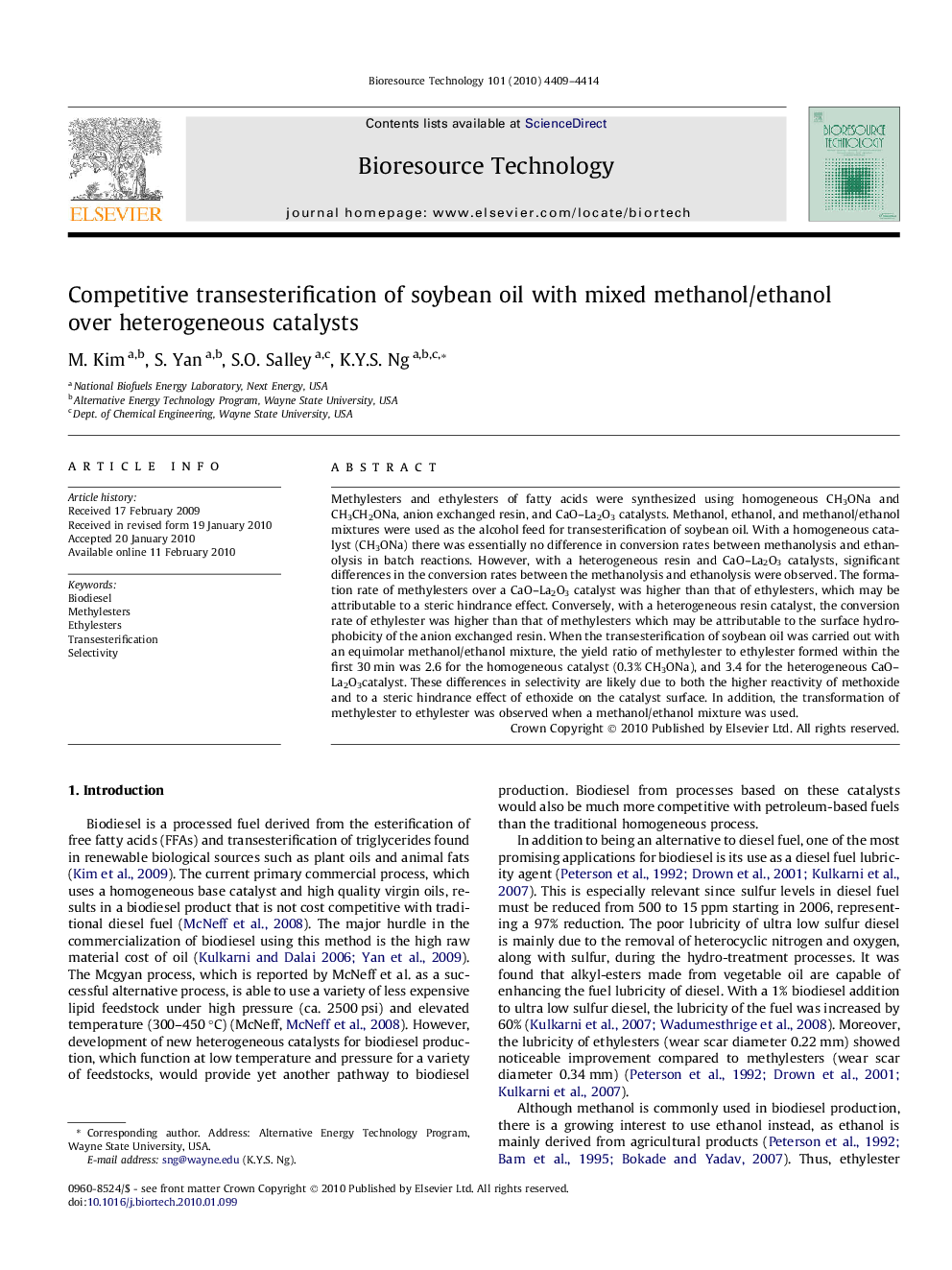| Article ID | Journal | Published Year | Pages | File Type |
|---|---|---|---|---|
| 10395614 | Bioresource Technology | 2010 | 6 Pages |
Abstract
Methylesters and ethylesters of fatty acids were synthesized using homogeneous CH3ONa and CH3CH2ONa, anion exchanged resin, and CaO-La2O3 catalysts. Methanol, ethanol, and methanol/ethanol mixtures were used as the alcohol feed for transesterification of soybean oil. With a homogeneous catalyst (CH3ONa) there was essentially no difference in conversion rates between methanolysis and ethanolysis in batch reactions. However, with a heterogeneous resin and CaO-La2O3 catalysts, significant differences in the conversion rates between the methanolysis and ethanolysis were observed. The formation rate of methylesters over a CaO-La2O3 catalyst was higher than that of ethylesters, which may be attributable to a steric hindrance effect. Conversely, with a heterogeneous resin catalyst, the conversion rate of ethylester was higher than that of methylesters which may be attributable to the surface hydrophobicity of the anion exchanged resin. When the transesterification of soybean oil was carried out with an equimolar methanol/ethanol mixture, the yield ratio of methylester to ethylester formed within the first 30Â min was 2.6 for the homogeneous catalyst (0.3% CH3ONa), and 3.4 for the heterogeneous CaO-La2O3catalyst. These differences in selectivity are likely due to both the higher reactivity of methoxide and to a steric hindrance effect of ethoxide on the catalyst surface. In addition, the transformation of methylester to ethylester was observed when a methanol/ethanol mixture was used.
Related Topics
Physical Sciences and Engineering
Chemical Engineering
Process Chemistry and Technology
Authors
M. Kim, S. Yan, S.O. Salley, K.Y.S. Ng,
